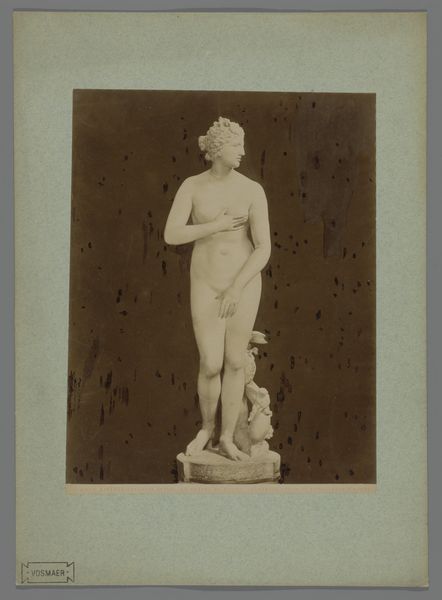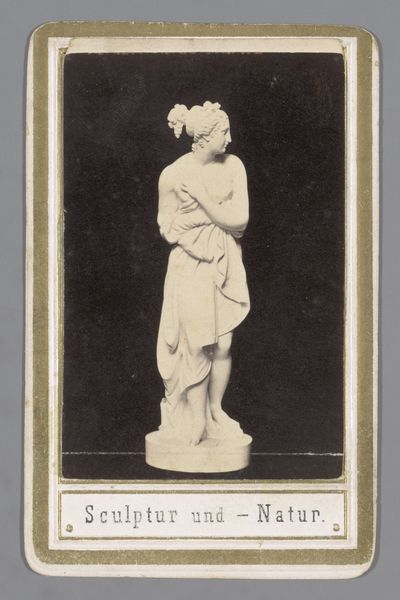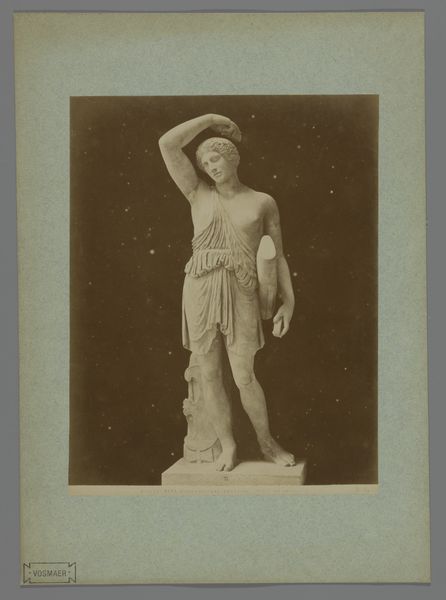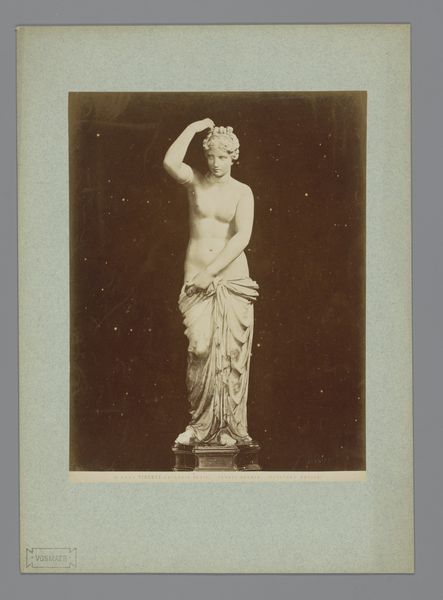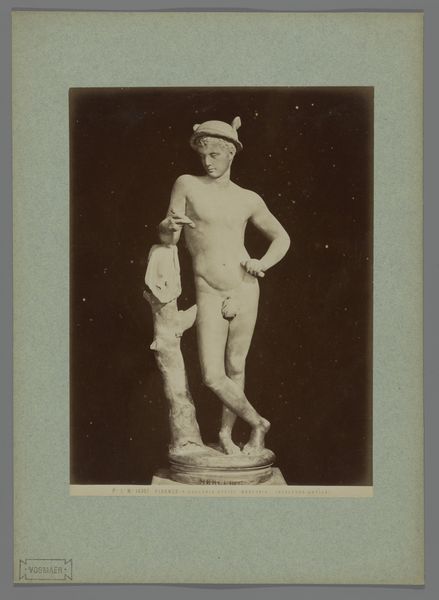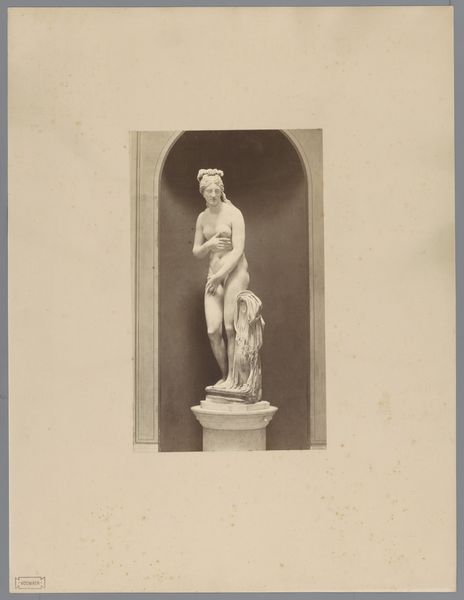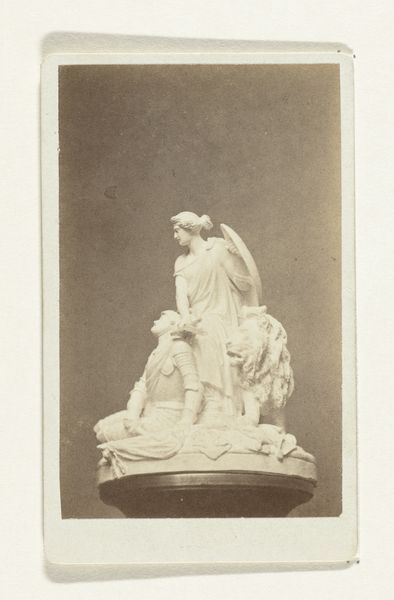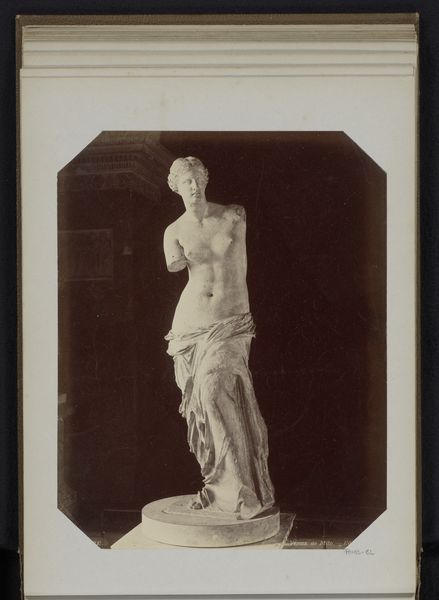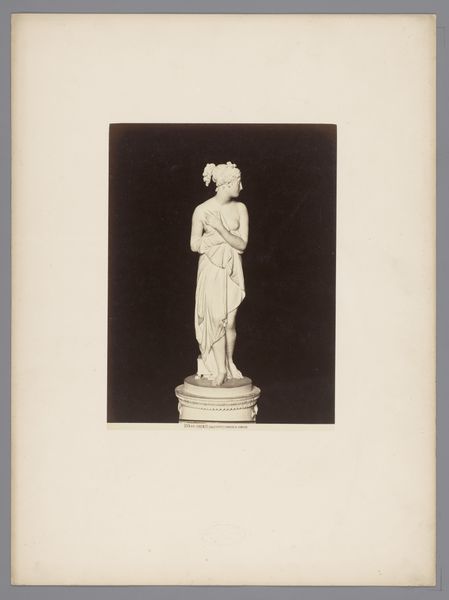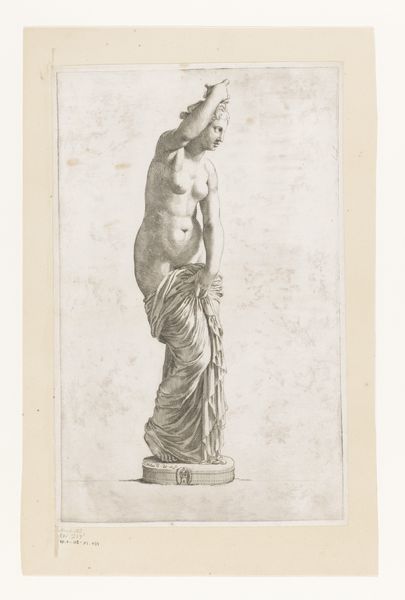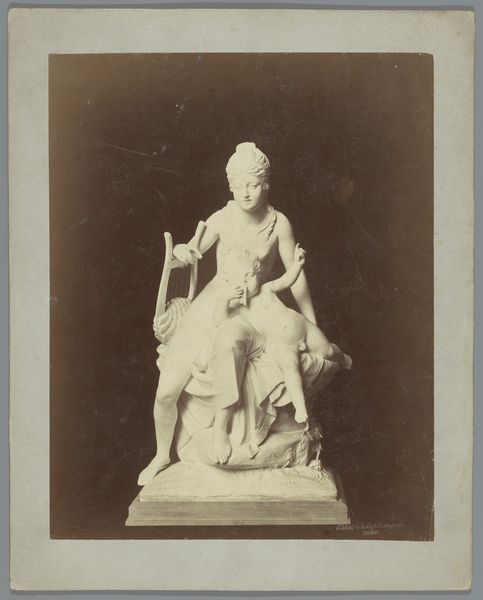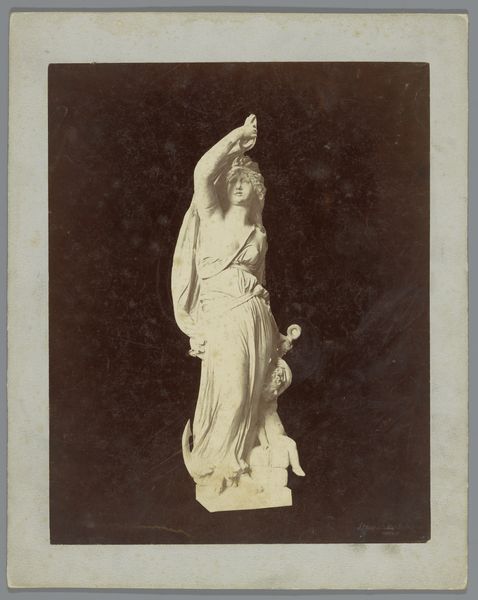
Sculptuur van Venus naar Antonio Canova in de Galleria Palatina te Florence, Italië 1857 - 1900
0:00
0:00
Dimensions: height 257 mm, width 191 mm, height 355 mm, width 255 mm
Copyright: Rijks Museum: Open Domain
Editor: This photograph, taken sometime between 1857 and 1900 by Fratelli Alinari, captures a sculpture of Venus after Antonio Canova. It’s currently housed in the Rijksmuseum. There’s a stark stillness to the image. How do you interpret this work, especially considering its historical context? Curator: Well, immediately I'm struck by how photography is being used here. It isn't just documentation; it's an active engagement with the neoclassical ideals Canova embodied. The Alinari brothers, by photographing this sculpture, are participating in a larger conversation about the reproduction and dissemination of classical beauty in a rapidly changing, industrializing world. Editor: That's fascinating! So it’s less about the sculpture itself and more about what the photograph represents in that time period? Curator: Precisely. Consider the power dynamics at play. Who had access to the original sculpture in Florence? And who now has access to this image, spread via photography? Doesn’t this act democratize art, bringing it to the masses, but simultaneously re-contextualize it within the framework of 19th-century Italian nationalism and emerging tourist industry? Editor: I see. It’s about accessibility but also about control and interpretation. It really makes you wonder about the role of photography in shaping our understanding of classical art. Curator: Absolutely! And what about the gendered gaze? Canova’s Venus, photographed and distributed like this, further entrenches particular notions of idealized female beauty, and the male gaze's dominance in the art world. We have to unpack these complex layers to truly understand the artwork's significance. Editor: I never would have thought about all that. It shows how photographs can be powerful cultural tools, perpetuating or challenging social norms depending on who wields them and why. Curator: Exactly. Looking critically, everything holds its own social value depending on perspective.
Comments
No comments
Be the first to comment and join the conversation on the ultimate creative platform.
